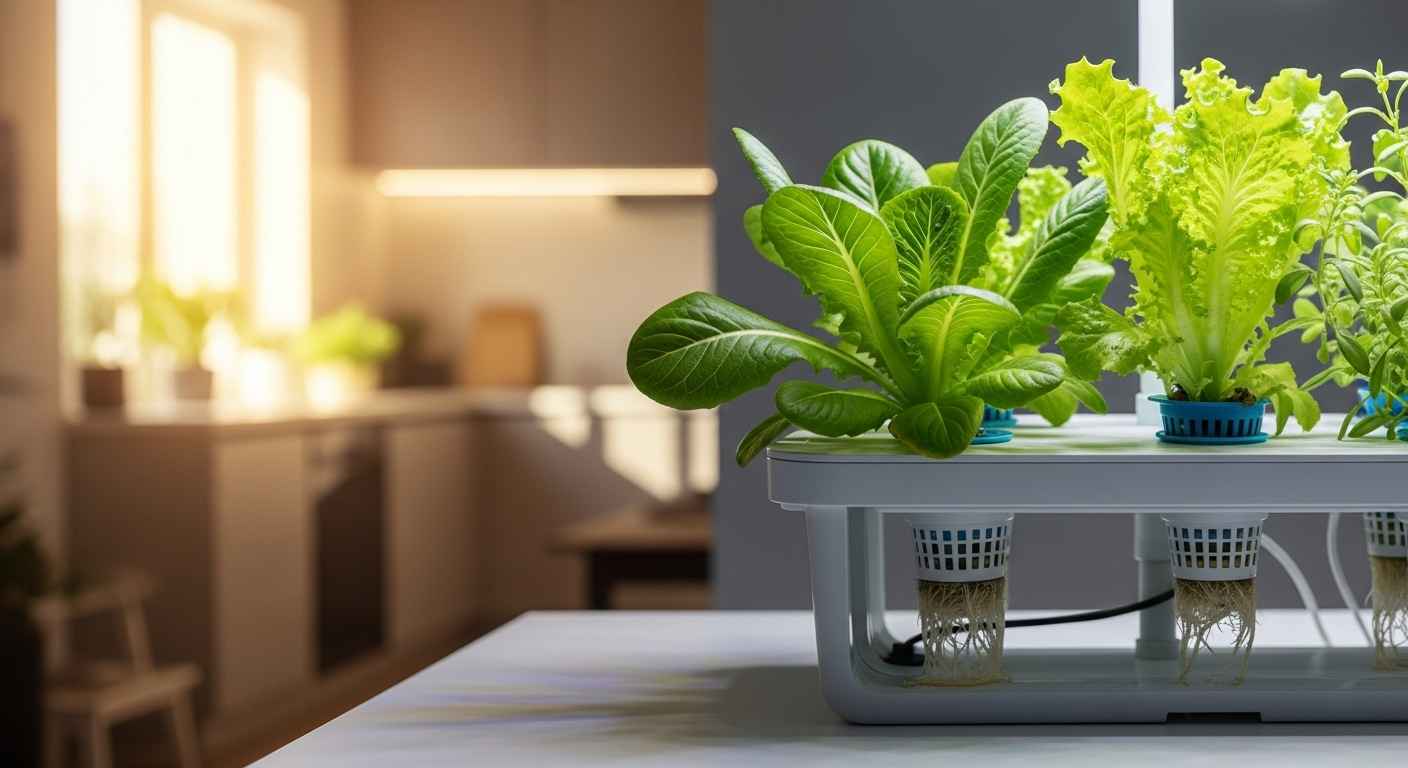Growing fresh vegetables and herbs at home has never been easier. Hydroponic gardening lets you grow plants without soil using nutrient-rich water solutions. This method produces faster growth, bigger harvests, and fresh food year-round.
What is Hydroponic Gardening?
Hydroponic gardening grows plants without traditional soil. Instead, plants get nutrients directly from water mixed with special plant food. The roots either sit in this nutrient water or grow in materials like clay pebbles or rock wool.
This method works because plants don’t actually need soil. They need water, nutrients, oxygen, and light. Hydroponics delivers all these things more efficiently than traditional gardening.
Key Benefits:
- Faster plant growth (up to 30% quicker)
- Higher yields in smaller spaces
- No soil-borne pests or diseases
- Year-round growing indoors
- Uses 90% less water than soil gardening
- No weeding required
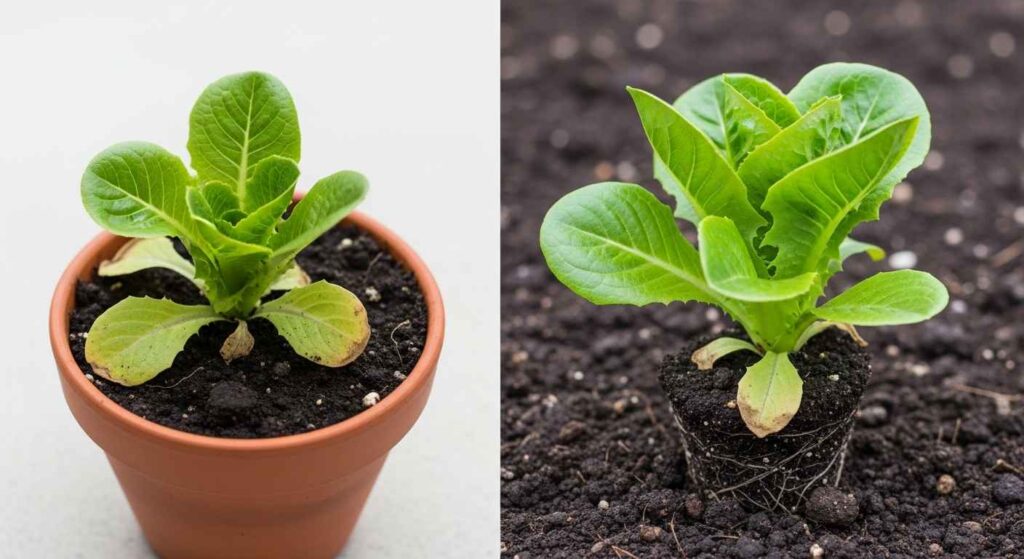
Best Hydroponic Systems for Beginners
Deep Water Culture (DWC) – Easiest to Start
Deep Water Culture is the simplest hydroponic system for home growers. Plants grow with their roots sitting directly in nutrient-rich water. You can build a basic DWC system using storage containers or buckets.
What You Need:
- Large opaque container (5-gallon bucket works well)
- Net pots
- Air pump and air stone
- Growing medium (clay pebbles or rock wool)
- pH testing kit
- Hydroponic nutrients
Cost: $30-50 for basic setup
Wick System – Most Low-Maintenance
The wick system pulls nutrient solution to plants from a reservoir using a simple wick. This low-maintenance system works great for beginners growing herbs and small vegetables.
Perfect for: Herbs, lettuce, small peppers
Kratky Method – No Electricity Needed
This passive system requires no pumps or electricity. Plants start with roots in water, then as they grow and water levels drop, roots get both nutrients and oxygen.
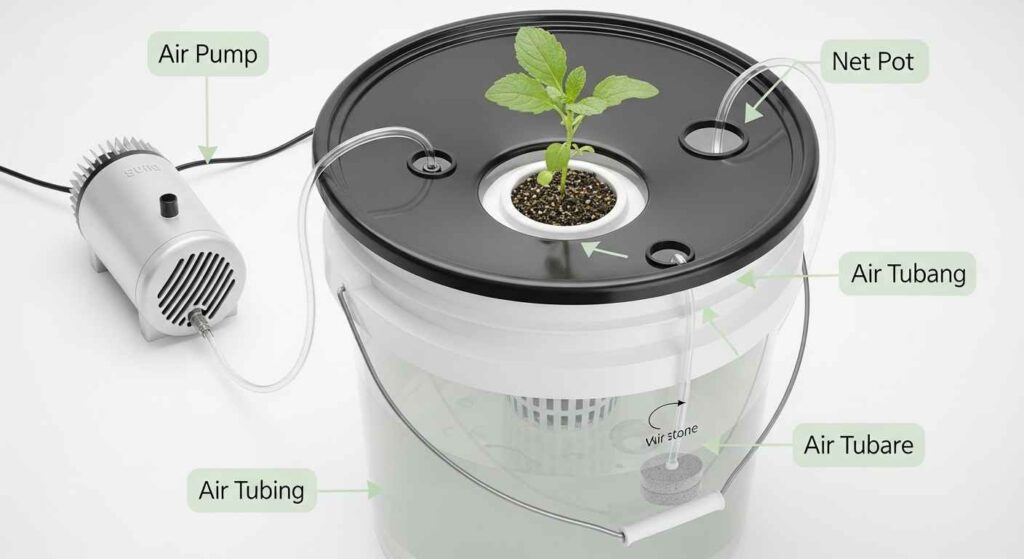
Best Plants for Hydroponic Beginners
Leafy Greens (Easiest to Grow)
Beginner-friendly plants like leaf lettuce, herbs, and green onions offer ease of growth, fast harvest cycles, and resistance to common issues.
Top Choices:
- Lettuce – Ready in 4-6 weeks, grows in any system
- Spinach – Thrives in cooler conditions, harvest in 5-7 weeks
- Kale – Hardy and forgiving, continuous harvest
- Arugula – Fast growing, ready in 3-4 weeks
Herbs (Best Value Crops)
Basil, mint, and coriander are strong candidates for your first hydroponic garden. These herbs can be harvested continually and provide fantastic value.
Easy Herb Options:
- Basil – Grows quickly, loves warm conditions
- Mint – Nearly impossible to kill, spreads fast
- Cilantro – Cool weather crop, bolt-resistant varieties available
- Parsley – Long harvest period, both flat and curly types work
Vegetables for Intermediate Growers
Once comfortable with greens, try these:
- Cherry tomatoes – Need support but produce heavily
- Peppers – Both sweet and hot varieties work well
- Cucumbers – Choose compact varieties for indoor growing
- Green beans – Bush varieties work better than climbing types
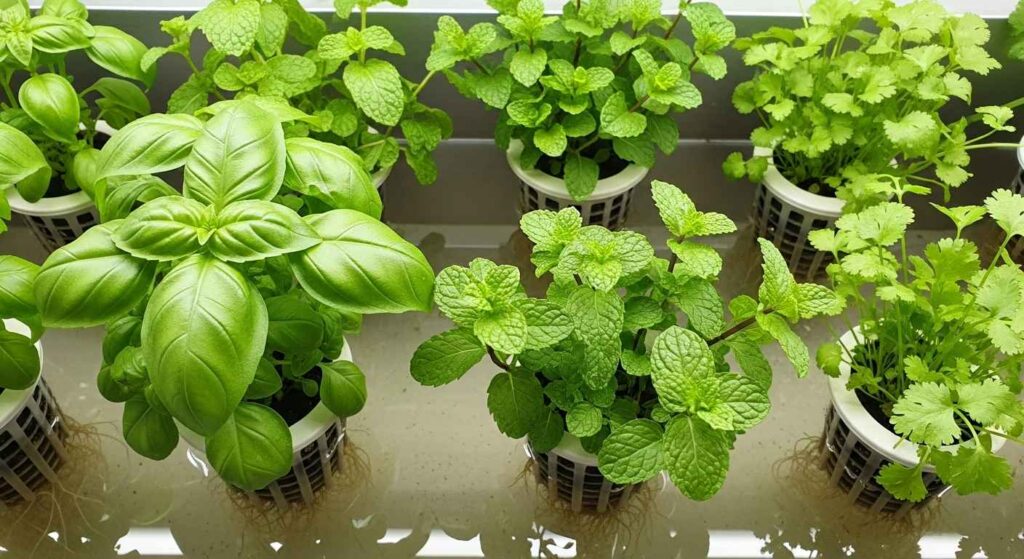
Setting Up Your First Hydroponic System
Step 1: Choose Your Location
Pick a spot with:
- 6-8 hours of bright light daily (or add grow lights)
- Stable temperature (65-75°F works for most plants)
- Good air circulation
- Easy access to water and electricity
- Protection from temperature extremes
Step 2: Prepare Your Nutrient Solution
Plants grow best in water with a pH between 5.4-7.0. If pH is too low or high, plants cannot efficiently use nutrients.
Basic Nutrient Mixing:
- Fill container with clean water
- Add hydroponic nutrients following package directions
- Test and adjust pH to 5.8-6.2 for most vegetables
- Test electrical conductivity (EC) to ensure proper nutrient strength
pH Adjustment:
- Too high: Add pH Down solution
- Too low: Add pH Up solution
- Test daily for first week, then every few days
Step 3: Plant Your Seeds or Seedlings
Starting from Seeds:
- Use rock wool cubes or rapid rooter plugs
- Keep moist until germination
- Provide gentle light during sprouting
Using Seedlings:
- Rinse soil from roots gently
- Place in net pots with growing medium
- Support stems until roots establish
Step 4: Monitor and Maintain
Daily Tasks:
- Check water levels
- Observe plant health
- Ensure pumps and lights work properly
Weekly Tasks:
- Test and adjust pH
- Add nutrients as needed
- Clean any algae buildup
Monthly Tasks:
- Complete nutrient solution change
- Deep clean system components
- Replace air stones if needed
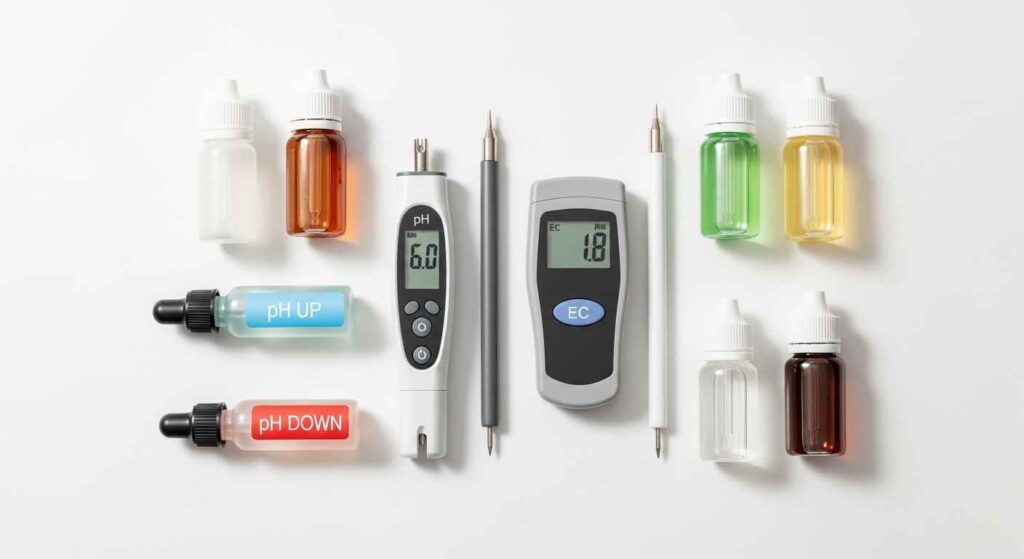
Common Beginner Mistakes to Avoid
Nutrient Problems
Over-fertilizing – More nutrients don’t mean faster growth. Follow mixing instructions exactly.
Wrong pH – Test pH every few days. Most plants need 5.8-6.2 pH range.
Stale nutrients – Change nutrient solution completely every 2-3 weeks.
Environmental Issues
Poor lighting – Insufficient light causes weak, spindly growth. Most vegetables need bright light 12-16 hours daily.
Temperature swings – Keep growing area between 65-75°F for best results.
No air circulation – Stagnant air promotes disease. Use a small fan for gentle air movement.
System Maintenance
Dirty water – Clean containers monthly to prevent algae and bacteria buildup.
Clogged pumps – Clean pump filters weekly to maintain proper water flow.
Overcrowding – Give plants space to grow. Crowded plants compete for light and nutrients.
Cost Breakdown for Starting Hydroponic Gardening
Basic DIY System ($50-100)
- 5-gallon bucket with lid: $15
- Air pump and stone: $20
- Net pots and growing medium: $10
- pH test kit: $15
- Basic nutrients: $20
- Seeds: $10
Mid-Range Setup ($100-300)
- Pre-made DWC system: $80
- LED grow light: $60
- Digital pH meter: $30
- Quality nutrients: $40
- Variety of seeds and supplies: $30
Premium System ($300-800)
- All-in-one hydroponic garden (AeroGarden style): $200
- Professional grow light: $150
- Complete nutrient and pH kit: $60
- Advanced growing supplies: $100
Troubleshooting Common Problems
Yellowing Leaves
Causes:
- Nutrient deficiency (usually nitrogen)
- pH too high or low
- Root problems from poor oxygenation
Solutions:
- Check and adjust nutrient levels
- Test pH and correct if needed
- Ensure air pump works properly
Slow Growth
Causes:
- Insufficient light
- Wrong temperature
- Nutrient imbalance
Solutions:
- Add more or brighter lights
- Maintain 65-75°F temperature
- Replace nutrient solution
Algae Growth
Causes:
- Light reaching nutrient water
- Warm water temperatures
- Excess nutrients
Solutions:
- Cover all water containers to block light
- Keep water temperature below 70°F
- Reduce nutrient concentration
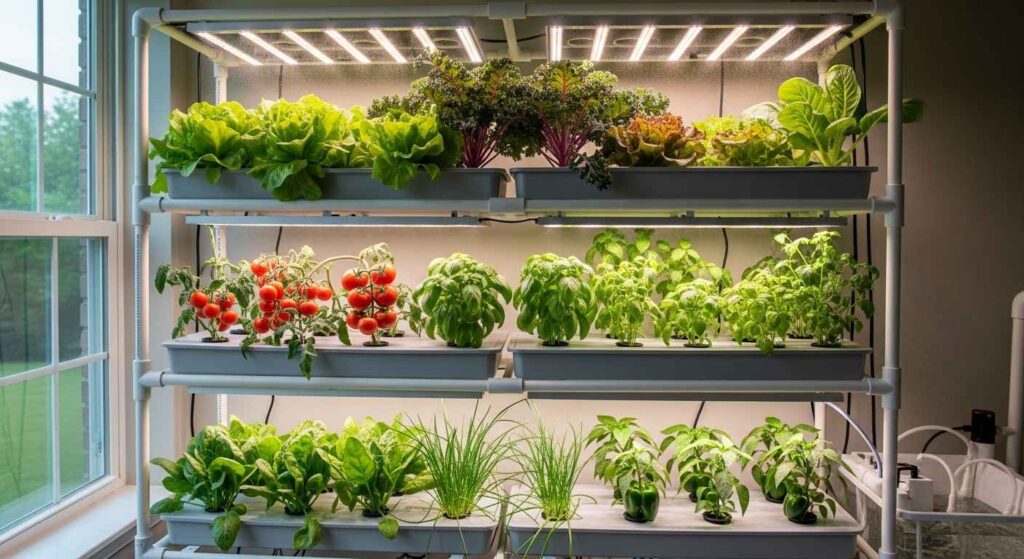
Hydroponic Gardening Through the Seasons
Spring Setup (March-May)
Start cool-season crops like lettuce, spinach, and herbs. This is the perfect time to begin hydroponic gardening as temperatures stabilize.
Summer Growing (June-August)
Focus on heat-loving plants like tomatoes, peppers, and basil. Indoor systems help avoid extreme outdoor heat.
Fall Harvests (September-November)
Return to cool-season crops. Many leafy greens actually prefer the shorter days of fall.
Winter Production (December-February)
Hydroponics shines in winter when fresh vegetables are expensive. Grow hearty greens and herbs indoors with artificial lighting.
Expanding Your Hydroponic Garden
Adding More Plants
Start with 2-4 plants to learn the basics. Once comfortable, expand gradually:
- Add a second growing container
- Try different plant varieties
- Experiment with new growing techniques
Vertical Growing
Maximize space with vertical systems:
- Tower gardens for leafy greens
- Hanging systems for trailing plants
- Multi-level setups for different crops
Advanced Techniques
After mastering basics, consider:
- Nutrient Film Technique (NFT) – Thin film of nutrients flows past roots
- Ebb and Flow – Periodic flooding and draining cycles
- Aeroponics – Roots suspended in air, misted with nutrients
Why Choose Hydroponic Gardening for Your Home
Hydroponic gardening offers several advantages over traditional soil gardening, especially for home growers with limited space. You can produce more food in less space while using fewer resources.
The initial learning curve is gentle if you start with simple systems and easy plants. Most beginners see success within their first month of growing.
Modern hydroponic supplies are readily available online and at garden centers. The community of home hydroponic gardeners is helpful and supportive for newcomers.
Whether you want fresh herbs for cooking, salad greens for healthy eating, or a rewarding hobby, hydroponic gardening delivers results. Start small, learn the basics, and expand as your confidence grows.
With proper setup and care, your hydroponic garden will provide fresh, healthy food year-round while connecting you with the satisfaction of growing your own plants.
Ready to start your hydroponic garden? Begin with a simple deep water culture system and easy plants like lettuce or basil. You’ll be harvesting fresh food within weeks of starting your first system.
Also Read:
